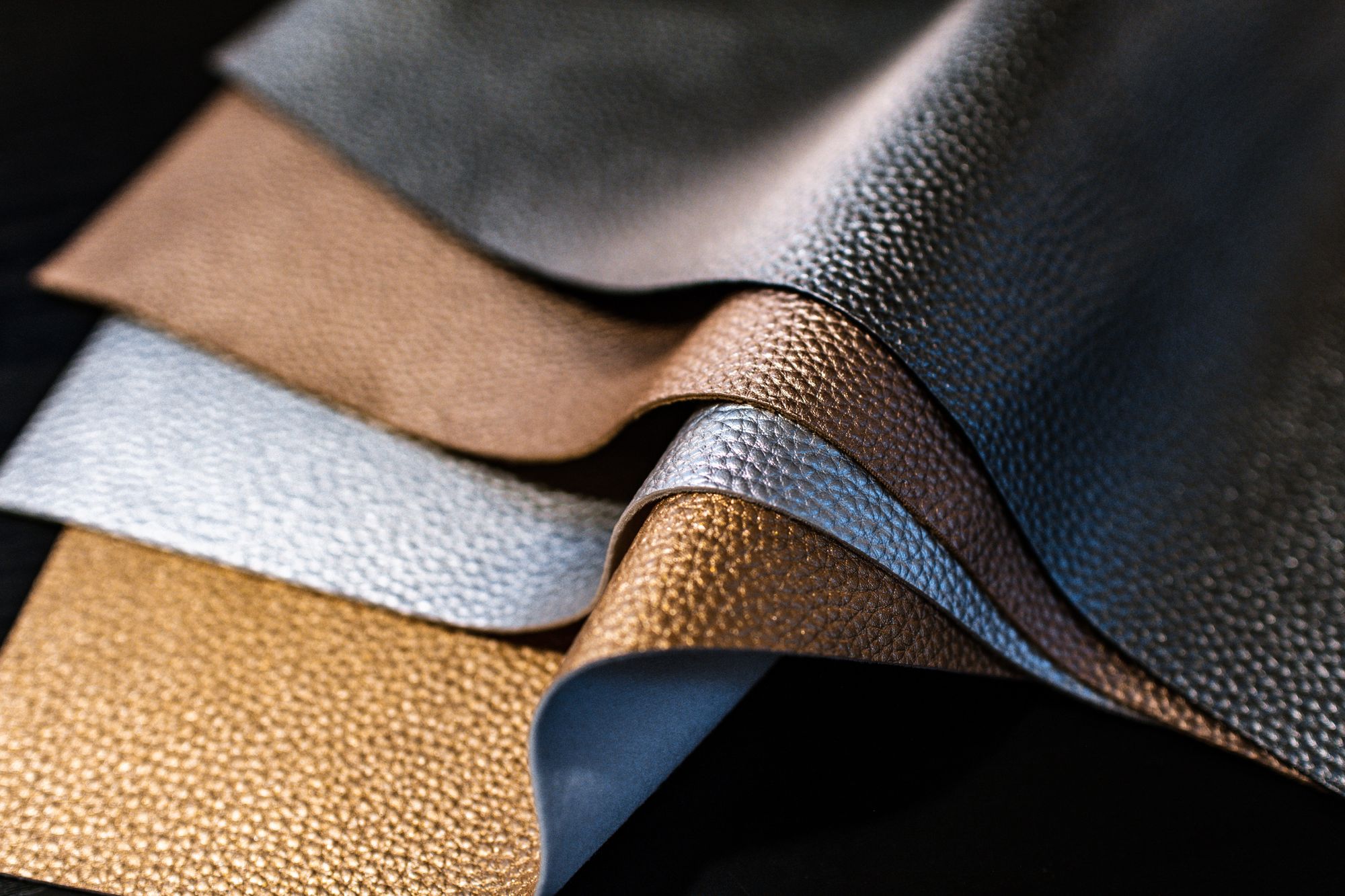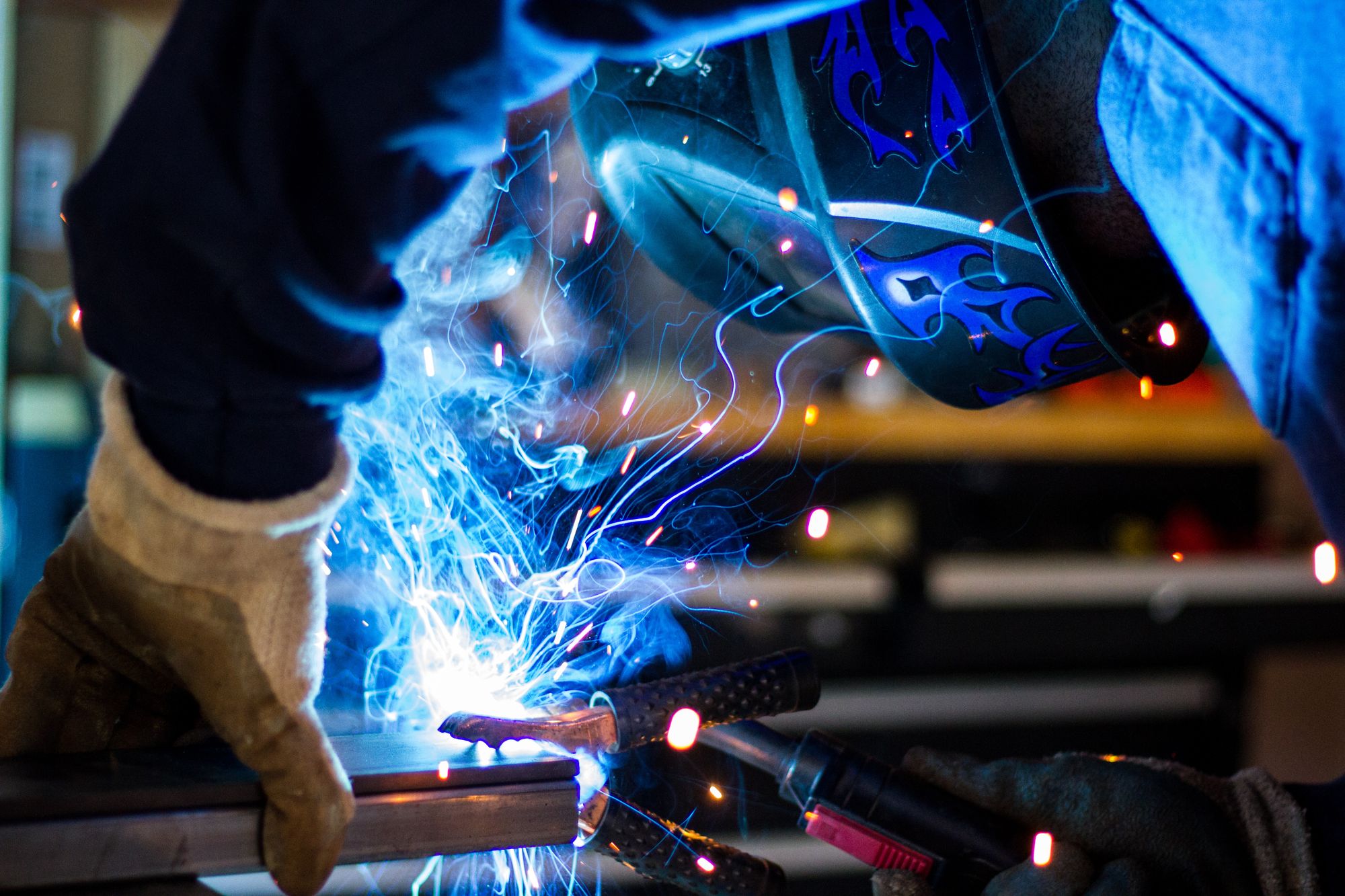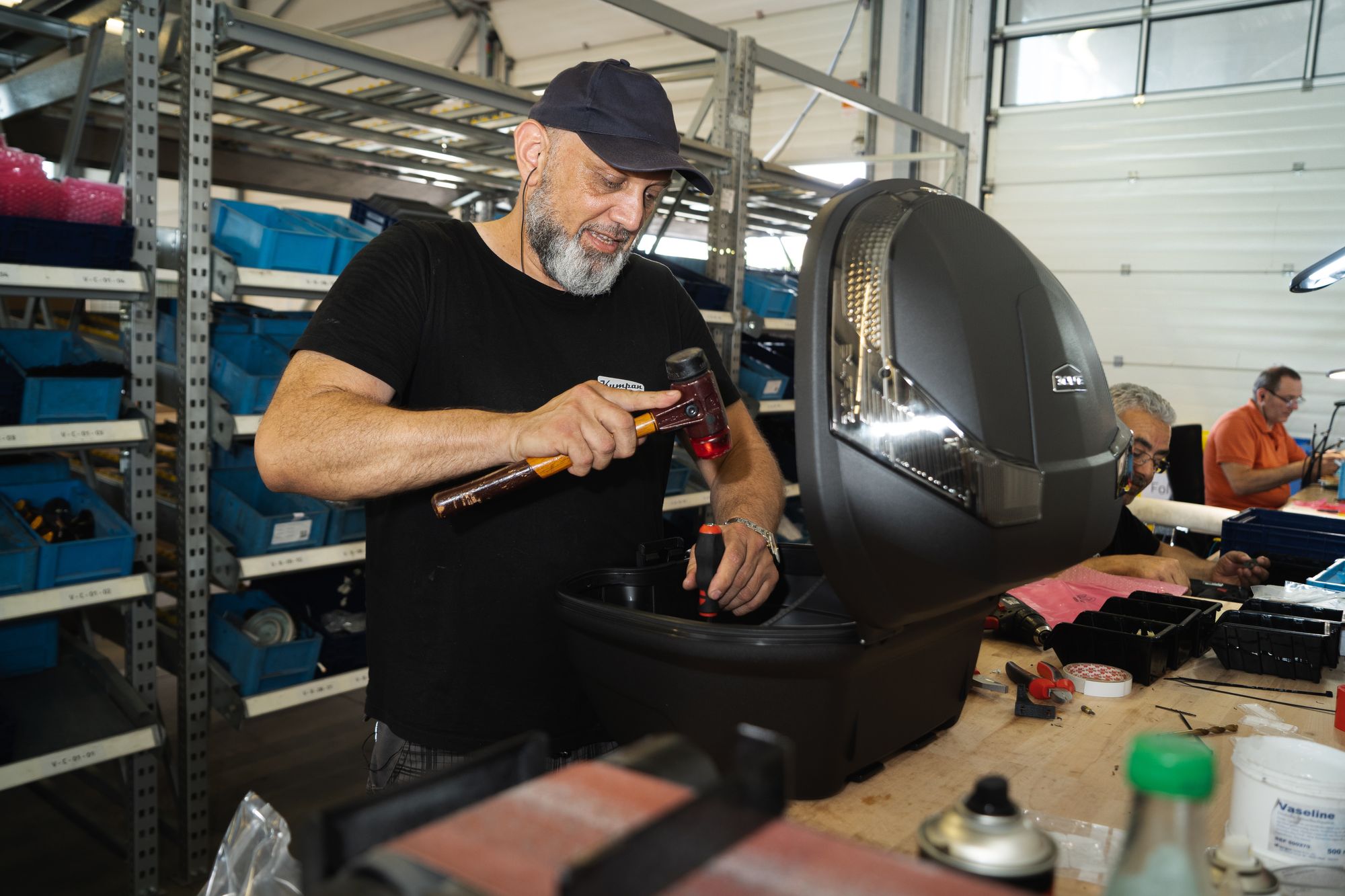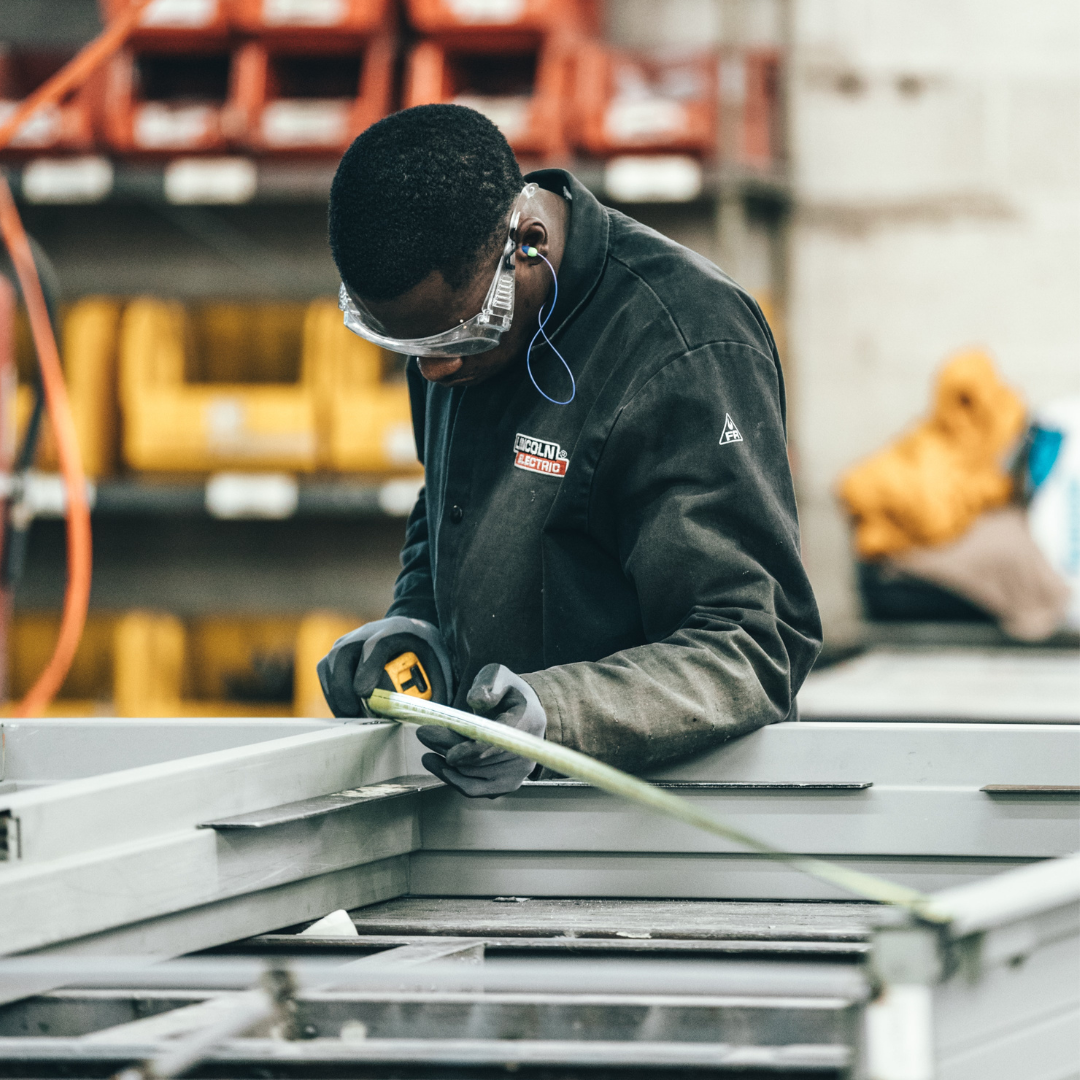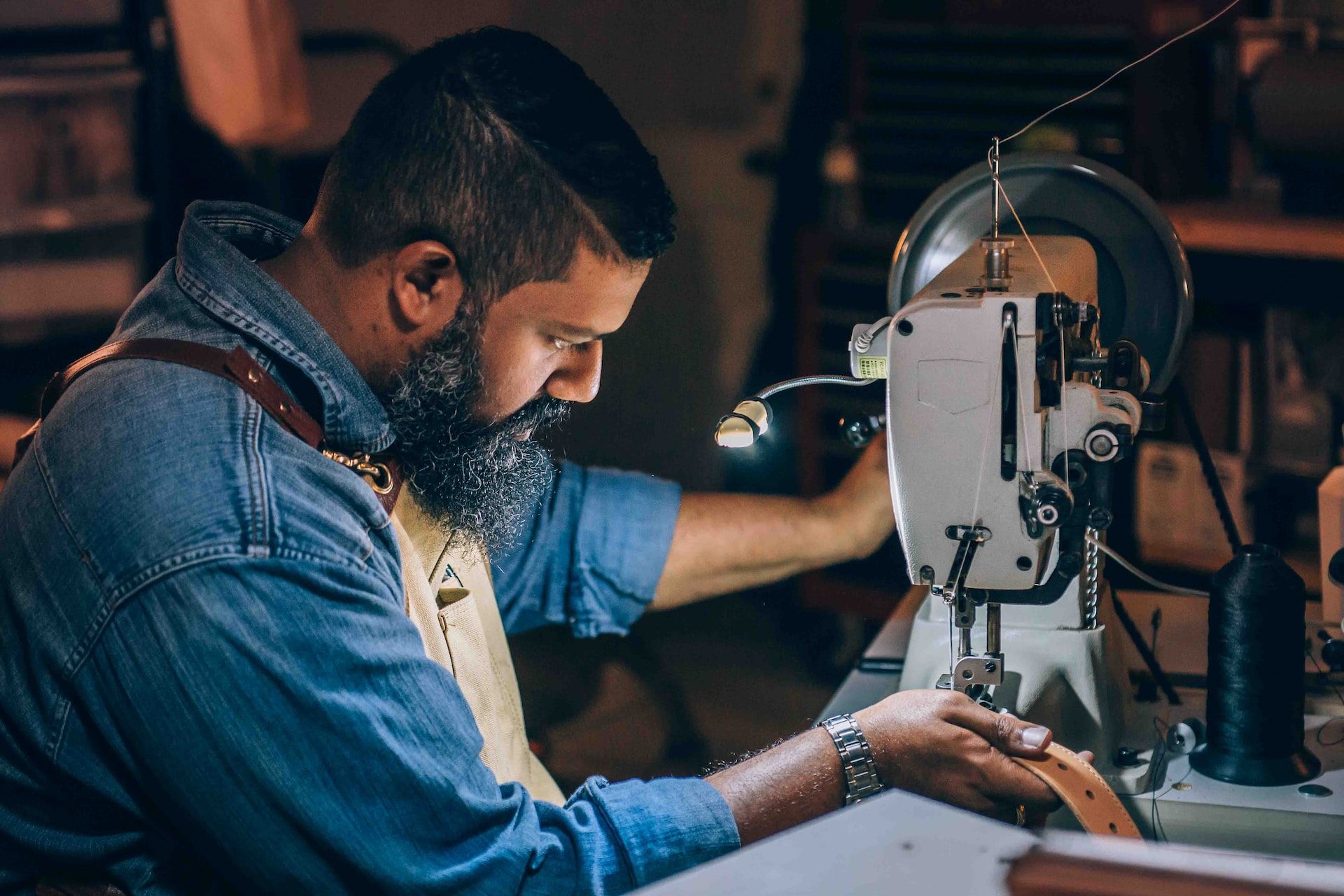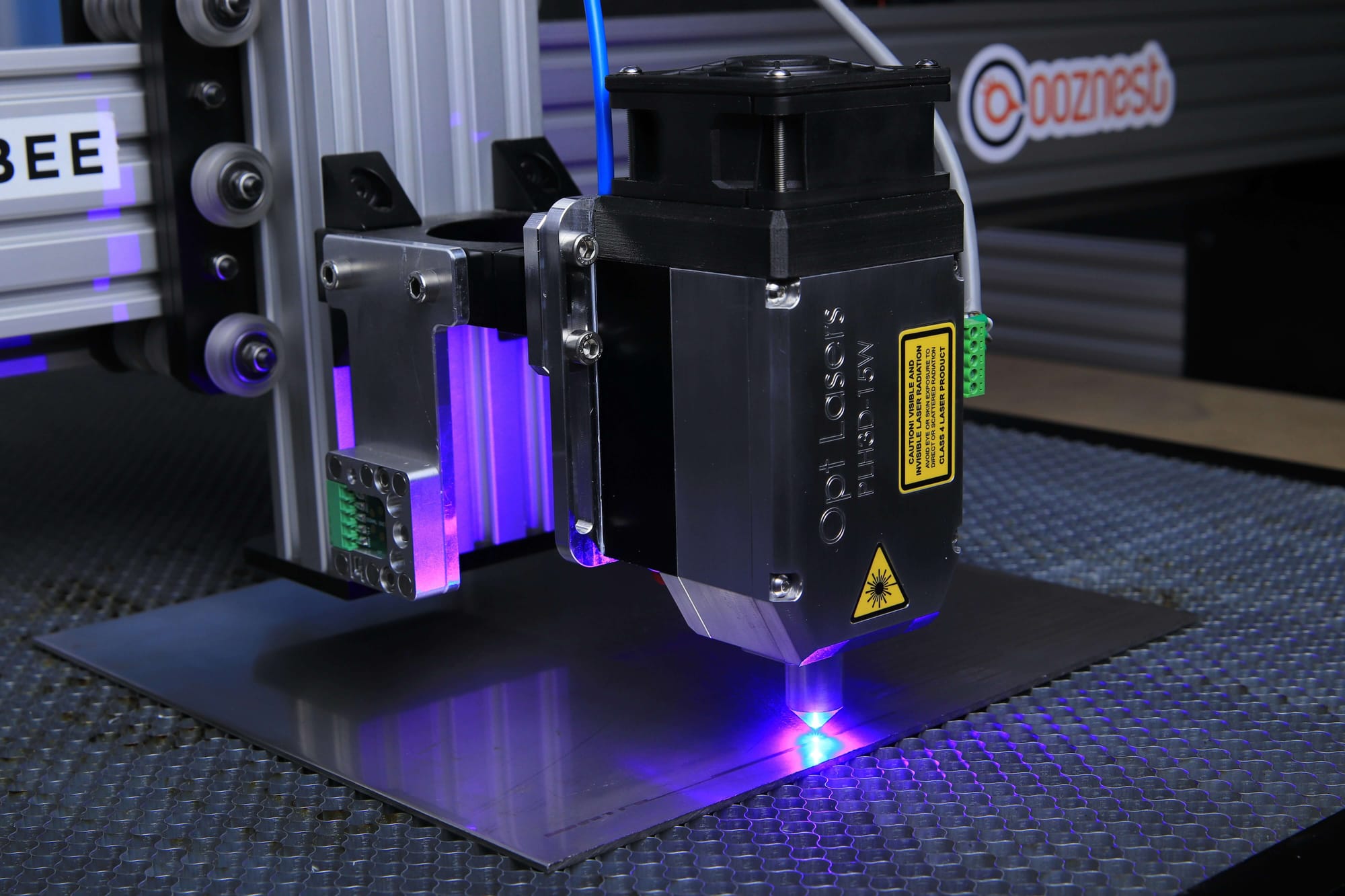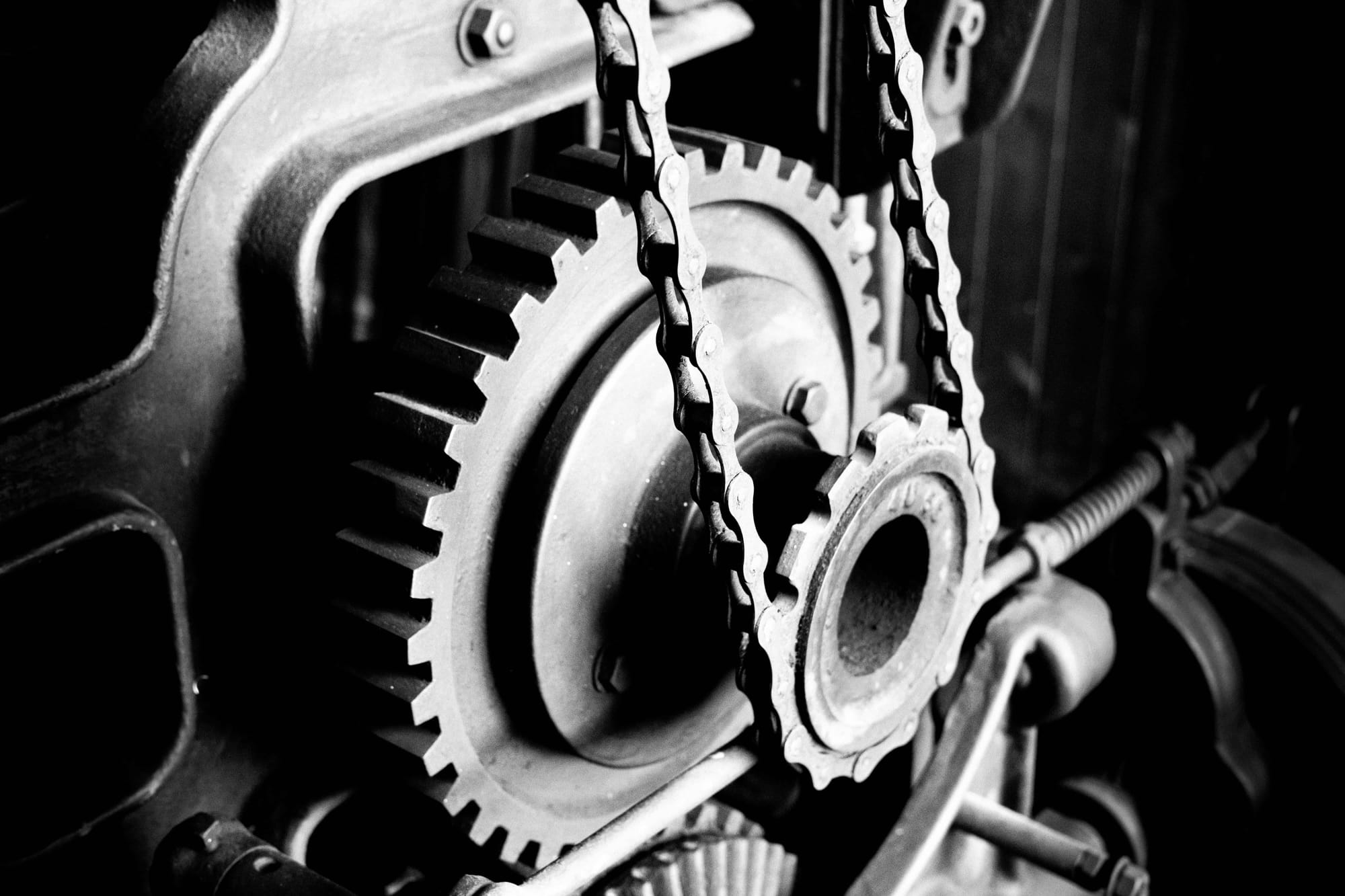The world of leather manufacturing is complex and interesting. Leather has been a prized material for centuries, valued for its durability, texture, and versatility. However, traditional leather manufacturing practices have come under scrutiny due to their negative environmental impacts.
As consumers become increasingly aware of these issues, there is a growing demand for more sustainable alternatives. One solution is leather recycling, which offers several benefits.
In this article, we will explore the process of traditional leather manufacturing, its environmental concerns, and the need for sustainable alternatives. We will then delve into the concept of leather recycling and its related concepts. Let’s take a look at the table of content:
- About Leather Manufacturing
- Environmental Concerns Associated with Traditional Leather Manufacturing
- Need for Sustainable Alternatives
- Recycling in Leather Manufacturing Industry
- Leather Recycling and How it Differs from Traditional Leather Manufacturing?
- Leather Manufacturing Methods
- Different Methods of Leather Recycling
- Challenges and its Solutions
- Case Studies
- Future Outlook
- Wrapping Up
- How Deskera Can Assist You?
About Leather Manufacturing
Leather manufacturing is a significant industry that involves turning animal hides into various leather products. It includes clothing, footwear, and accessories.
While leather is a durable and versatile material, traditional leather manufacturing practices can have a negative impact on the environment due to the use of chemicals, water-intensive processes, and waste generation.
The importance of recycling in the leather industry lies in its potential to reduce waste and environmental impact, while also providing a sustainable alternative to traditional leather manufacturing practices.
Recycling can help to extend the lifespan of leather products, minimize waste, and conserve natural resources, making it an essential practice for a more sustainable future.
Environmental Concerns Associated with Traditional Leather Manufacturing
Traditional leather manufacturing practices involve the use of chemicals and water-intensive processes that can have a significant impact on the environment.
Some of the environmental concerns associated with traditional leather manufacturing include:
- Water pollution: Leather manufacturing requires large amounts of water, which can be contaminated with chemicals used in the tanning process. This polluted water can end up in rivers and other water bodies, harming aquatic life and affecting the health of people who depend on these water sources.
- Deforestation: The production of leather requires significant amounts of land, leading to deforestation and the destruction of natural habitats.
- Greenhouse gas emissions: Traditional leather manufacturing practices produce greenhouse gas emissions, contributing to climate change.
Need for Sustainable Alternatives
The need for sustainable alternatives in leather manufacturing is becoming increasingly urgent. The leather industry is a significant contributor to environmental degradation, with traditional manufacturing practices causing water pollution, deforestation, and greenhouse gas emissions.
Additionally, the leather industry produces a significant amount of waste, which can take years to decompose and negatively impact the environment.
Sustainable alternatives, such as leather recycling, can help to mitigate these environmental impacts. Leather recycling can help to reduce waste, conserve natural resources, and minimize the use of harmful chemicals in the production of leather.
Moreover, it also offers a more sustainable alternative to traditional leather manufacturing, as it can help to extend the lifespan of leather products and minimize the need for new leather production.
Furthermore, as consumers become more aware of the environmental impact of the products they use, there is a growing demand for sustainable alternatives in the leather industry. Companies that adopt sustainable practices, including leather recycling, may have a competitive advantage in the market and appeal to environmentally conscious consumers.
Consequently, the need for sustainable alternatives in leather manufacturing is clear. By adopting more sustainable practices, the leather industry can reduce its negative impact on the environment and work towards a more sustainable future.
Recycling in Leather Manufacturing Industry
Recycling in the leather industry involves the collection and processing of leather waste to create new leather products. This process helps to reduce waste, conserve natural resources, and minimize the environmental impact of leather manufacturing.
Here is a detailed explanation of how recycling works in the leather industry:
- Collection of leather waste: Leather waste can come from various sources, including manufacturing scraps, leather offcuts, and end-of-life leather products. This waste is collected from factories, tanneries, and other sources and sorted into different grades based on quality.
- Processing of leather waste: Once collected, the leather waste is processed to remove any non-leather materials, such as metal or plastic. The leather is then cleaned and treated to remove any contaminants, such as dyes or finishes.
- Shredding and bonding: The processed leather waste is then shredded into small pieces and bonded together using natural or synthetic binders. This creates a new material that can be used to make new leather products.
- Manufacturing of new leather products: The bonded leather material is then used to create new leather products, such as shoes, bags, and upholstery. The material can be cut, dyed, and finished in the same way as traditional leather, providing a sustainable alternative to new leather production.
Recycling in the leather industry offers several benefits. Firstly, it helps to reduce waste and conserve natural resources. By using leather waste to create new products, the industry can minimize the amount of waste that ends up in landfills, reducing the environmental impact of leather manufacturing.
Secondly, leather recycling helps to reduce the demand for new leather production, which can have significant negative environmental impacts, such as deforestation and water pollution. By using recycled leather, the industry can reduce its reliance on new leather production and move towards a more sustainable future.
Overall, recycling in the leather industry is an important practice for reducing waste and minimizing the environmental impact of leather manufacturing. It provides a sustainable alternative to traditional leather production, helping to conserve natural resources and move towards a more circular economy.
Leather Recycling and How it Differs from Traditional Leather Manufacturing?
Leather recycling is the process of converting discarded leather waste into a new material that can be used to make new leather products. This process differs from traditional leather manufacturing in several ways.
Firstly, traditional leather manufacturing involves using raw animal hides, which are processed using various chemicals and water-intensive processes to create leather. In contrast, leather recycling uses discarded leather waste, such as manufacturing scraps, end-of-life products, or offcuts, which are collected, sorted, and processed to create a new material.
Secondly, leather recycling is a more sustainable alternative to traditional leather manufacturing. Traditional leather manufacturing involves significant environmental impacts, such as water pollution, deforestation, and greenhouse gas emissions. In contrast, leather recycling helps to minimize these impacts by reducing waste and minimizing the need for new leather production.
Additionally, leather recycling offers several benefits, including:
- Reduction of waste: Leather waste can take years to decompose and contributes to the accumulation of waste in landfills. Furthermore, recycling leather waste reduces the amount of waste that ends up in landfills, helping to conserve natural resources.
- Conservation of natural resources: The production of new leather requires the use of significant amounts of natural resources, such as land, water, and energy. Leather recycling helps to conserve these resources by reducing the need for new leather production.
- Cost-effectiveness: Recycling leather waste can be a cost-effective alternative to traditional leather manufacturing. By using existing materials, the industry can minimize the costs associated with raw material acquisition and reduce the need for expensive chemical and water-intensive processes.
- Minimizing environmental impact: Traditional leather manufacturing processes involve the use of various chemicals, which can lead to water pollution and environmental damage. Additionally, leather production is known to contribute to deforestation, greenhouse gas emissions, and other environmental problems. Leather recycling helps to minimize these environmental impacts by reducing the need for new leather production and minimizing waste.
- Creating new products: Recycling leather waste can result in the creation of new products, such as shoes, bags, and upholstery. By using recycled leather, these products have a lower environmental impact and contribute to a more sustainable future.
In conclusion, leather recycling is a more sustainable alternative to traditional leather manufacturing. By reducing waste and conserving natural resources, leather recycling helps to move the industry towards a more sustainable and circular economy.
Different Leather Manufacturing Methods
Leather recycling methods typically involve collecting discarded leather waste and processing it to create a new material that can be used to make new products. The specific methods used can vary depending on the type and condition of the leather waste.
There are several different methods of leather recycling, including mechanical recycling, chemical recycling, and upcycling.
Mechanical Recycling
Mechanical recycling involves breaking down leather waste into small pieces through grinding or shredding. The resulting material can then be mixed with a binding agent and molded into new products. This method is commonly used for manufacturing products such as footwear, belts, and bags.
Chemical Recycling
Chemical recycling involves breaking down leather waste using chemicals. One approach to chemical recycling is depolymerization, which involves breaking down the leather into its constituent molecules, which can then be used to make new leather products.
Dissolution
Another approach is dissolution, in which the leather is dissolved in a solvent and the resulting solution is used to create new leather materials. Chemical recycling methods are generally more complex and require specialized equipment and expertise.
Upcycling
Upcycling involves repurposing old leather products into new ones. For example, an old leather jacket could be transformed into a new bag or wallet. Upcycling not only helps to minimize waste but also gives new life to old leather products that might otherwise have been discarded.
It's important to note that each method of leather recycling has its own advantages and challenges. Mechanical recycling is a simpler and more straightforward approach but may result in lower quality materials.
On the other hand, chemical recycling methods offer more flexibility and can produce higher-quality materials, but require more expertise and specialized equipment. Upcycling is a creative and resourceful approach but may be limited by the availability of suitable leather waste.
Overall, the growing demand for sustainable and eco-friendly products is driving the development of new and innovative methods of leather recycling, and it's likely that new approaches and techniques will continue to emerge in the years ahead.
Advantages and Disadvantages of Each Method
Each method of leather recycling has its own advantages and disadvantages, and the suitability of each method depends on the specific circumstances and requirements of the application.
Mechanical recycling:
Advantages:
- Relatively simple and straightforward method.
- Does not require specialized equipment or expertise.
- Can be cost-effective.
- Helps to reduce waste.
Disadvantages:
- May result in lower quality materials.
- May require the addition of chemical binders.
- May not be suitable for all types of leather waste.
Chemical recycling:
Advantages:
- Offers more flexibility and can produce higher-quality materials.
- Can produce a wider range of leather-like materials.
- Can be used with a variety of leather waste types.
Disadvantages:
- Requires specialized equipment and expertise.
- May use toxic chemicals.
- Can have a higher environmental impact due to the use of chemicals.
Upcycling:
Advantages:
- Can result in high-quality and unique products.
- Minimizes waste.
- Can be a creative and resourceful approach.
Disadvantages:
- Limited by the availability of suitable leather waste.
- Can be time-consuming and labor-intensive.
- May not be suitable for large-scale applications.
Consequently, all methods of leather recycling help to reduce waste and have a lower environmental impact than traditional leather manufacturing. The quality of the resulting product can vary depending on the method used and the quality of the original leather waste.
In addition, the specific environmental impact of each method can vary depending on factors such as the chemicals used, the energy required, and the water usage. It's important to carefully evaluate each method in the context of the specific application to determine the best approach.
Challenges and its Solutions
The leather industry has traditionally relied on a number of practices that are not environmentally sustainable. These practices include the use of toxic chemicals, the consumption of large amounts of water and energy, and the disposal of large amounts of waste.
Transitioning to more sustainable practices presents a number of potential challenges for the leather industry. Some of these challenges include:
Cost: Transitioning to more sustainable practices can be expensive, and the cost may be prohibitive for some companies, especially smaller ones. Sustainable practices may require the purchase of new equipment, the use of more expensive materials, or the hiring of additional staff.
Regulation: As governments around the world become more focused on sustainability, they may begin to impose more stringent regulations on the leather industry. Compliance with these regulations could be costly and time-consuming.
Consumer demand: Consumers are becoming increasingly aware of the environmental impact of the products they buy, and are demanding more sustainable options. However, sustainable materials may be more expensive than traditional ones, and consumers may not be willing to pay the extra cost.
Supply chain challenges: The leather industry relies on a complex global supply chain, and transitioning to more sustainable practices may require changes at every stage of the supply chain. This could be challenging to coordinate, especially for smaller companies.
Resistance to change: Some companies in the leather industry may be resistant to change, either because they are satisfied with their current practices, or because they are skeptical of the benefits of sustainability. This resistance could slow down the adoption of more sustainable practices across the industry.
The challenges facing the leather industry in terms of transitioning to more sustainable practices are significant. However, many companies are already taking steps to address these challenges and are making progress towards a more sustainable future.
Here are some potential solutions to the challenges facing the leather industry in terms of transitioning to more sustainable practices:
- Standardized regulations: Governments and industry bodies can work together to create standardized regulations and guidelines on sustainable practices in the leather industry. This can help companies to adopt sustainable practices consistently and make it easier for consumers to identify sustainable products.
- Incentives: Governments can provide incentives to companies that adopt sustainable practices, such as tax breaks or subsidies. This can help to offset the additional costs associated with sustainable practices and encourage more companies to adopt these practices.
- Collaboration: Collaboration between different stakeholders in the leather industry, such as manufacturers, retailers, and consumers, can help to create a more sustainable supply chain. For example, manufacturers can work with retailers to create closed-loop systems for waste and encourage consumers to recycle their leather products.
- Investment in research and development: Investment in research and development can help to create new and innovative methods for leather recycling that are more cost-effective and environmentally friendly. This can also lead to the creation of new products and materials that are more sustainable than traditional leather.
In terms of the future outlook for leather recycling, there is significant potential for growth and development. With the increasing demand for sustainable products, the adoption of leather recycling is likely to become more widespread.
New technologies and methods for leather recycling are also being developed, which can help to make the process more efficient and cost-effective. As the industry continues to evolve, it is important for companies to prioritize sustainability and work towards creating a more sustainable and circular supply chain for leather products. Check in detail about future outlook in further section.
Case Studies
Following, we’ve discussed some crucial case studies of companies that have successfully implemented leather recycling program. Let’s learn:
PUMA:
PUMA, a global sports brand, has implemented a successful leather recycling program called "Bring Me Back." The program involves collecting leather scraps from PUMA's manufacturing process and recycling them into new products such as shoes, bags, and clothing.
Furthermore, the company has partnered with a recycling company in Italy to develop a closed-loop system that minimizes waste and reduces the environmental impact of its manufacturing process. Through this program, PUMA has been able to reduce its waste and save on raw material costs.
Re:newcell:
Re:newcell is a Swedish company that has developed a chemical recycling process for textile and leather waste. The process involves breaking down the waste into its constituent molecules and then using these molecules to create new materials.
Furthermore, the company has partnered with H&M and other fashion brands to create a closed-loop system for textile and leather waste. By using this process, Re:newcell has been able to reduce waste and create new materials without the need for virgin resources.
Looptworks:
Looptworks is a U.S. company that specializes in upcycling leather and other materials into new products. The company sources its materials from excess and discarded inventory from other companies, such as airlines and outdoor gear manufacturers.
Looptworks has developed a range of products such as bags, wallets, and accessories, which are sold online and in retail stores. Through its upcycling program, Looptworks has been able to reduce waste and create unique and sustainable products.
In all these cases, the companies have successfully implemented recycling programs that have reduced waste, saved on raw material costs, and created new sustainable products. These programs have helped to reduce the environmental impact of the companies' manufacturing processes and have contributed to a more sustainable fashion industry.
Future Outlook
The future outlook for leather recycling is promising, with many advancements and developments on the horizon. Here are some key areas of growth and innovation:
- Technological advancements: New technologies are being developed that can make the leather recycling process more efficient and cost-effective. For example, advanced chemical recycling methods can break down leather into its constituent materials, which can then be used to create new products without the need for significant processing. Additionally, advancements in nanotechnology are being explored for leather recycling, which could lead to the creation of stronger and more durable recycled leather products.
- Circular economy: The concept of a circular economy, where waste is minimized and resources are used more efficiently, is gaining momentum in the fashion industry. Leather recycling can play a key role in creating a circular economy for leather products, where waste is reduced, and materials are reused to create new products. This can help to reduce the environmental impact of the leather industry and create a more sustainable supply chain.
- Increased demand for sustainable products: As consumers become more aware of the environmental impact of the products they buy, there is an increasing demand for sustainable products. This trend is likely to continue, with more consumers seeking out sustainable alternatives to traditional leather products. Leather recycling can help to meet this demand by providing a more sustainable and environmentally friendly option.
- Collaboration and partnerships: Collaboration between different stakeholders in the leather industry, such as manufacturers, retailers, and consumers, is crucial for creating a more sustainable supply chain for leather products. Furthermore, partnerships between companies and organizations can help to drive innovation and create new solutions for leather recycling. Additionally, collaboration between the leather industry and other industries, such as the technology and materials industries, can help to accelerate advancements in leather recycling.
Ultimately, the future outlook for leather recycling is positive, with significant potential for growth and development. As the industry continues to evolve, it is important for companies to prioritize sustainability and work towards creating a more sustainable and circular supply chain for leather products.
Wrapping Up
In conclusion, leather manufacturing has long been associated with negative environmental impacts, including water pollution, deforestation, and greenhouse gas emissions. However, with the increasing demand for sustainable products, the leather industry is beginning to embrace more sustainable practices, including leather recycling.
Leather recycling has several advantages over traditional leather manufacturing, including reducing waste, minimizing the environmental impact, and saving costs. Several methods of leather recycling exist, including chemical and mechanical recycling, each with its own advantages and disadvantages.
Despite the challenges facing the leather industry in terms of transitioning to more sustainable practices, several solutions can be implemented, including standardized regulations, incentives, collaboration, and investment in research and development.
Looking ahead, the future outlook for leather recycling is promising, with technological advancements, a growing demand for sustainable products, and collaborations driving innovation. The adoption of leather recycling is likely to become more widespread as more companies seek to create a more sustainable and circular supply chain for leather products.
In summary, while there are challenges in transitioning to more sustainable practices in the leather industry, there are also numerous opportunities for innovation and growth. By working together and embracing sustainable practices, the leather industry can create a more environmentally friendly and sustainable future.
How Deskera Can Assist You?
Deskera's integrated financial planning tools allow investors to better plan their investments and track their progress. It can help investors make decisions faster and more accurately.
Deskera Books enables you to manage your accounts and finances more effectively. Maintain sound accounting practices by automating accounting operations such as billing, invoicing, and payment processing.

Deskera CRM is a strong solution that manages your sales and assists you in closing agreements quickly. It not only allows you to do critical duties such as lead generation via email, but it also provides you with a comprehensive view of your sales funnel.
Deskera People is a simple tool for taking control of your human resource management functions. The technology not only speeds up payroll processing but also allows you to manage all other activities such as overtime, benefits, bonuses, training programs, and much more. This is your chance to grow your business, increase earnings, and improve the efficiency of the entire production process.
Final Takeaways
We've arrived at the last section of this guide. Let's have a look at some of the most important points to remember:
- The need for sustainable alternatives in leather manufacturing is becoming increasingly urgent. The leather industry is a significant contributor to environmental degradation, with traditional manufacturing practices causing water pollution, deforestation, and greenhouse gas emissions.
- Sustainable alternatives, such as leather recycling, can help to mitigate these environmental impacts. Leather recycling can help to reduce waste, conserve natural resources, and minimize the use of harmful chemicals in the production of leather.
- Recycling in the leather industry involves the collection and processing of leather waste to create new leather products. This process helps to reduce waste, conserve natural resources, and minimize the environmental impact of leather manufacturing.
- Leather recycling is the process of converting discarded leather waste into a new material that can be used to make new leather products. This process differs from traditional leather manufacturing in several ways.
- Chemical recycling involves breaking down leather waste using chemicals. One approach to chemical recycling is depolymerization, which involves breaking down the leather into its constituent molecules, which can then be used to make new leather products.
- Investment in research and development can help to create new and innovative methods for leather recycling that are more cost-effective and environmentally friendly.
- The concept of a circular economy, where waste is minimized and resources are used more efficiently, is gaining momentum in the fashion industry. Leather recycling can play a key role in creating a circular economy for leather products, where waste is reduced and materials are reused to create new products.
Related Articles
